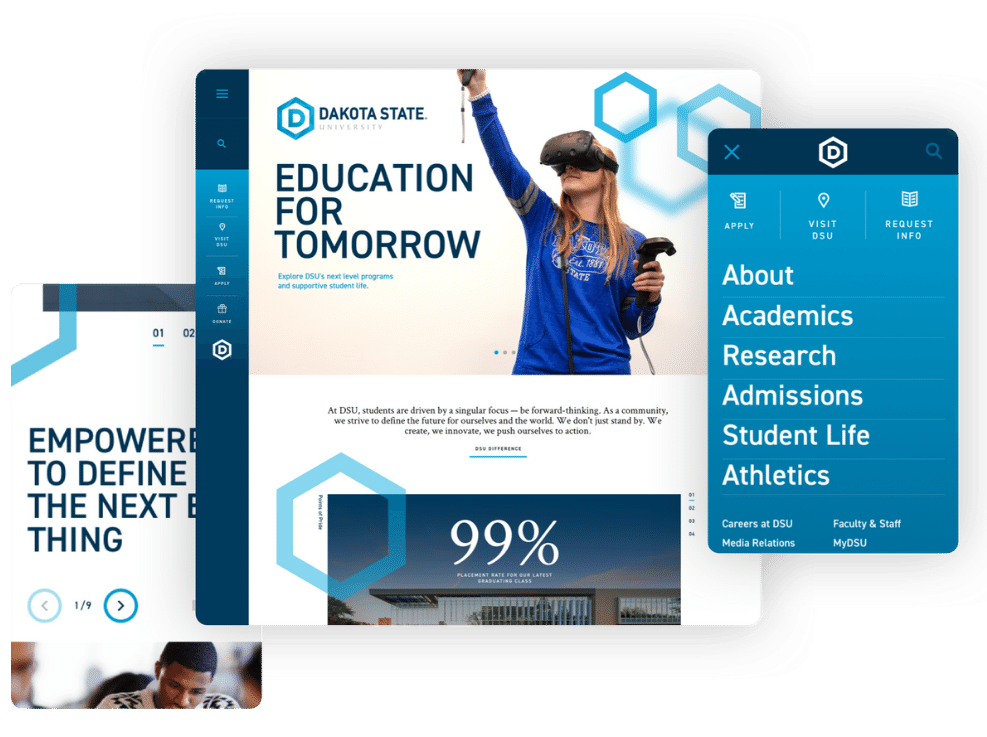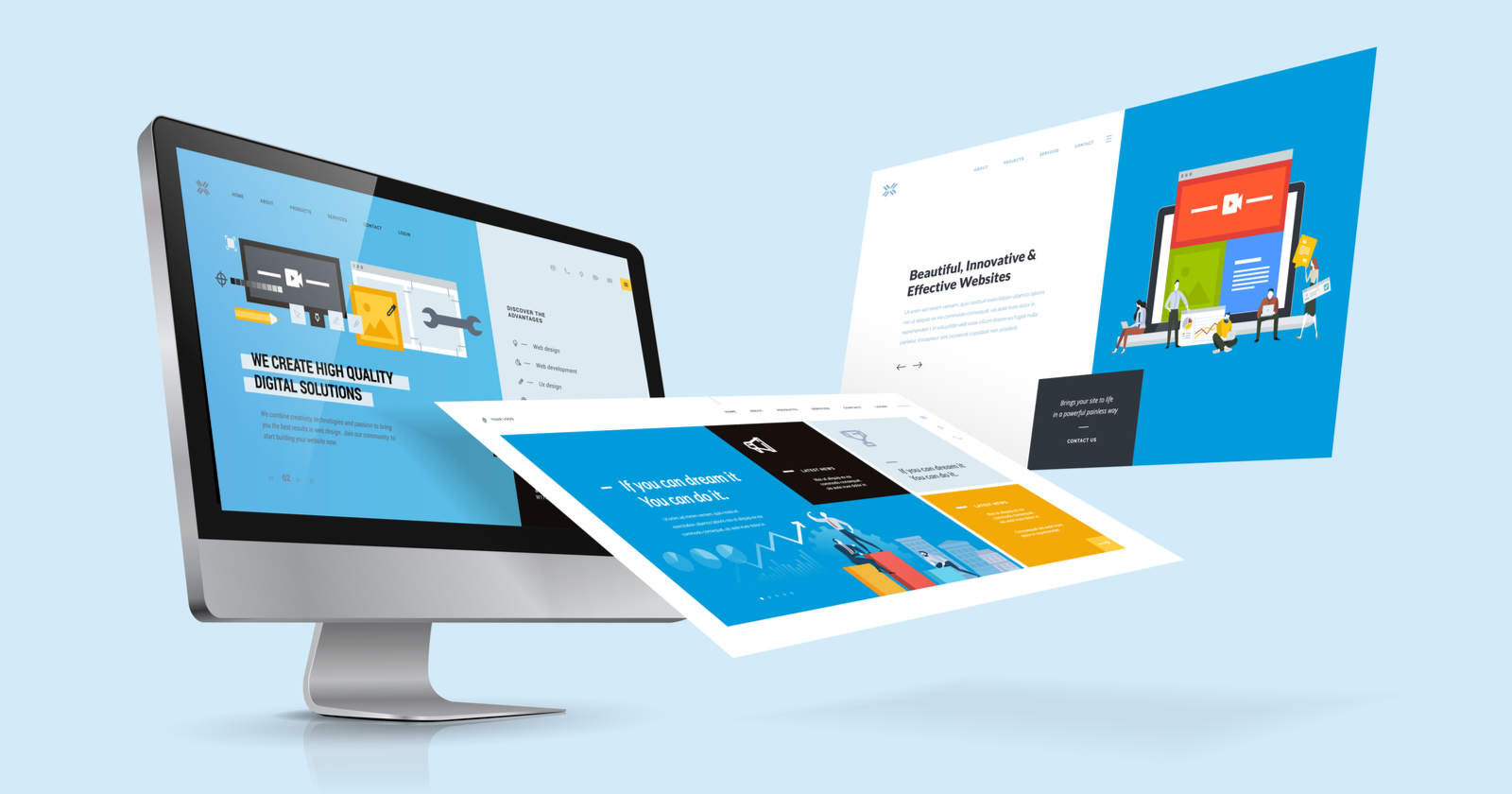Maximize User Experience With Cutting-edge Website Layout Solutions
In today's digital landscape, taking full advantage of customer experience through innovative internet site layout services is critical for services seeking to involve their audience properly. The integration of interactive components can additionally raise the user journey, prompting a reevaluation of typical layout techniques.
Comprehending User-Centric Style

To apply user-centric layout efficiently, it is important to perform complete research, including individual interviews, surveys, and functionality testing. These research methods offer useful data that educates style choices, making certain that the end product lines up with individual assumptions. In addition, producing individual personalities can assist designers empathize and envision with the end-users, assisting the style procedure toward extra appropriate remedies.
In addition, iterative design is a key part of user-centric approaches. By continually testing and refining layouts based upon user comments, designers can recognize discomfort factors and areas of renovation, leading to a more sleek last product. Ultimately, user-centric design is not just a phase in the development process but a constant commitment to prioritizing customer requirements, leading to even more effective and appealing digital experiences.
Value of Responsive Layouts
As digital communications significantly happen across a variety of tools, the relevance of receptive formats can not be overemphasized. A responsive layout ensures that a site adjusts flawlessly to different display sizes, from desktop monitors to smart devices. This adaptability is critical in today's multi-device landscape, where users expect a regular and interesting experience despite just how they access content.
The main advantage of responsive design is enhanced customer satisfaction. When a web site is optimized for all devices, it minimizes the demand for zooming, scrolling, or straight navigating, which can frustrate individuals and lead to higher bounce prices. Additionally, online search engine like Google prioritize mobile-friendly internet sites in their ranking formulas, making responsive designs important for efficient SEO strategies.
Rather of managing different versions of a web site for different gadgets, a single, fluid design can be modified, conserving time and sources. Ultimately, investing in responsive designs is not just a fad; it is a fundamental principle of modern internet design that dramatically boosts individual experience and interaction.
Enhancing Navigating and Accessibility
Effective navigating and availability are essential components of a properly designed web site, considerably affecting customer engagement and complete satisfaction. An user-friendly navigating structure allows visitors to locate info promptly and without effort, reducing irritation and increasing the likelihood of repeat visits. Executing clear, detailed labels for navigation links, in addition to a logical hierarchy, can guide customers seamlessly via the website.
Access is similarly vital, guaranteeing that all customers, regardless of their abilities or handicaps, can interact with the site properly. This can be attained with making use of ideal shade contrasts, message dimensions, and alt text for images, which together improve the experience for visually damaged users. Moreover, incorporating key-board navigation and screen viewers compatibility expands access for customers with varied requirements.
Normal usability screening can offer useful understandings into navigation performance and access concerns. By gathering responses from real users, developers can determine pain points and make educated modifications. Eventually, focusing on navigating and availability not just cultivates inclusivity but likewise grows a positive customer experience, strengthening the brand name's commitment to high quality and individual treatment in a progressively digital landscape.
Making Use Of Visual Pecking Order Successfully
Visual pecking order serves as a leading framework in site style, routing individuals' attention to the most crucial elements on a page. By purposefully organizing visual components such as spacing, color, and typography, developers can develop a clear pathway for users to follow. This framework not just boosts individual experience yet also enhances content understanding.
One effective way to develop aesthetic hierarchy is via using size and scale. Larger components normally draw in more interest, making headlines and essential discover this info here visuals famous. Complementing this technique with contrasting colors can even more separate key material from additional details, making sure that important information attracts attention.
In addition, the arrangement of aspects plays a critical function in directing individual communication. Utilizing a grid format can create a natural circulation, while whitespace assists to different web content and lower cognitive tons - Website Design. This willful spacing permits customers to refine details much more easily, causing enhanced engagement
Last but not least, utilizing consistent layout patterns helps reinforce visual hierarchy, providing customers redirected here with acquainted signs as they browse the website. By prioritizing these principles, designers can effectively make best use of user experience, making sure that site visitors can effortlessly find the details they seek.
Incorporating Interactive Aspects
The consolidation of interactive components right into internet site design can dramatically boost customer involvement and overall experience. Interactive features such as sliders, surveys, and quizzes not only captivate customers yet also promote energetic engagement, making the searching experience a lot more memorable. By encouraging users to interact, web sites can effectively preserve attention and decrease bounce rates.
Furthermore, incorporating dynamic content like animations and hover results includes an appealing layer of interactivity. These components can assist customers intuitively with the website, highlighting vital information and calls to action. As an example, animated switches can draw focus and improve click-through prices.
Moreover, personalization through interactive devices such as chatbots or referral engines enables sites to accommodate private choices, fostering a feeling of link. This customized technique not just enhances customer satisfaction yet additionally motivates repeat check outs.
Integrating analytics tools to track communications gives useful understandings right into individual habits, enabling continual enhancement of the interactive elements. Inevitably, a properly designed interactive experience changes a passive surfing session into an appealing journey, resulting in increased customer complete satisfaction and commitment. Consequently, integrating interactive aspects is crucial for maximizing individual experience in contemporary website style.
Verdict

In today's digital landscape, making the most of customer experience with innovative website design options is imperative for organizations seeking to engage their target market properly. Ultimately, prioritizing navigating and accessibility not just promotes inclusivity yet likewise cultivates a positive user experience, strengthening the brand name's commitment to high quality and customer treatment in a progressively digital landscape.

In conclusion, optimizing customer experience through cutting-edge web site layout remedies requires a commitment to user-centric concepts. Website Design.